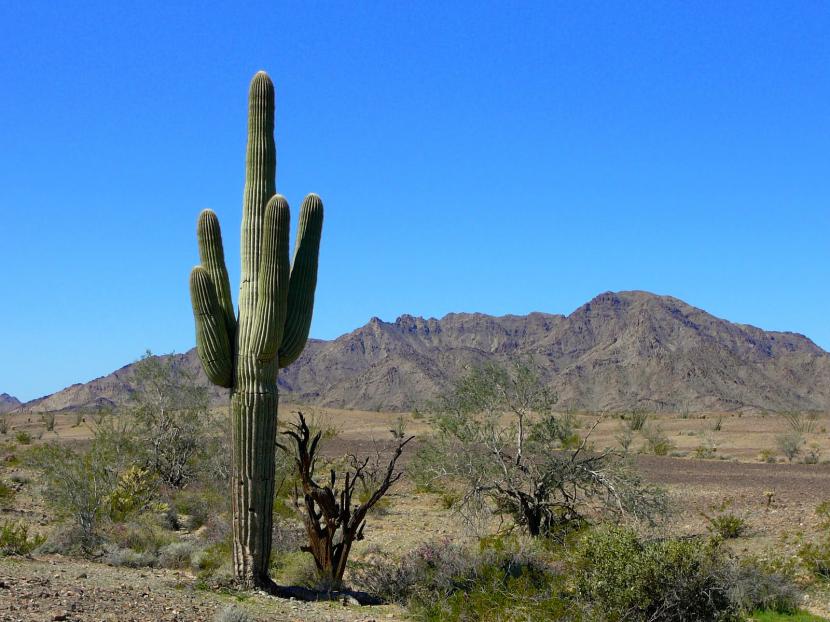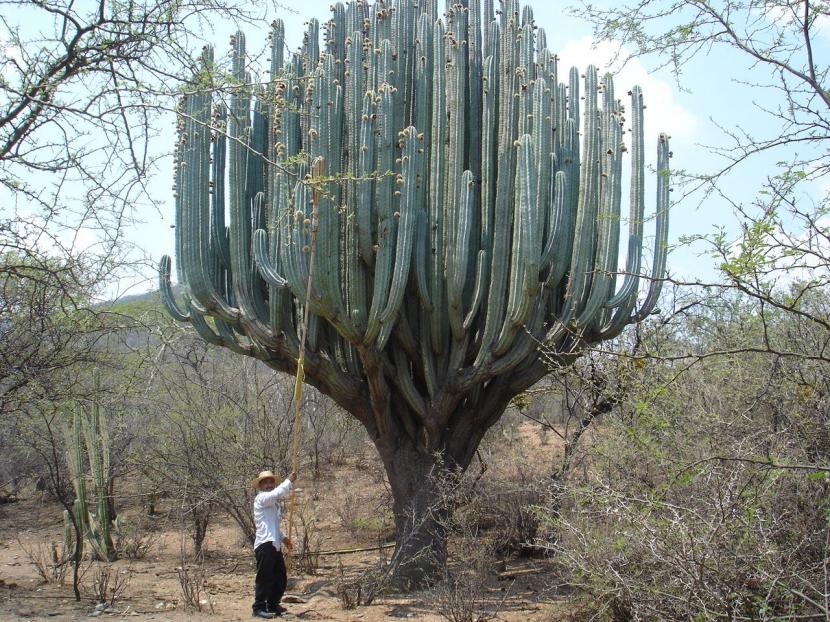
Among cactus lovers, we find people who are passionate about very tall cacti. Those columnar cacti typical of Mexico and Arizona that live in very dry lands, and have a growth ... not very fast. In nurseries they are really easy to find for sale, but it is not always easy to take care of them. We are talking, of course, of the popular The giant carnage (better known as Saguaro) and the Pachycereus pringlei (better known as Cardón gigante).
If you want to know cultivation and maintenance of these two beautiful cactus species, do not miss this article. We will tell you everything below.
Carnegiea Gigantea (Saguaro)

El Saguaro He is originally from Arizona. It has a very slow growth, in fact it is estimated that it takes about 30 years to reach one meter in height. It is a columnar cactus with very few branches. It requires direct light, and substrates that facilitate drainage. It resists low temperatures down to -4º.
In cultivation it usually happens that, after a few years, the cactus presents a black spot on the upper part, and the plant begins to decline more and more until it cannot survive. This is a problem that is avoided by watering it once a week in summer, and every 15-20 days (depending on the climate we have and its rainfall) the rest of the year. The fertilizer should not be missing either, to be used from spring to autumn.
Pachycereus pringlei (Giant Cardon)

El Giant cardon It is originally from Mexico, specifically from Sonora, where you can find huge specimens like the one in the photo above, with a height of 19 meters, and many branches. The thickness of the trunk can reach one meter in diameter. For many, this is the twin brother of the Saguaro, but the Cardón branches closer to the ground and has a much faster growth. Resists up to -2º.
A peculiarity that both species present is that adult specimens do not have spines. In fact, they only have them when they are young to protect themselves from potential diners. Like the Saguaro, it needs draining substrate, and periodic irrigations and fertilizers.